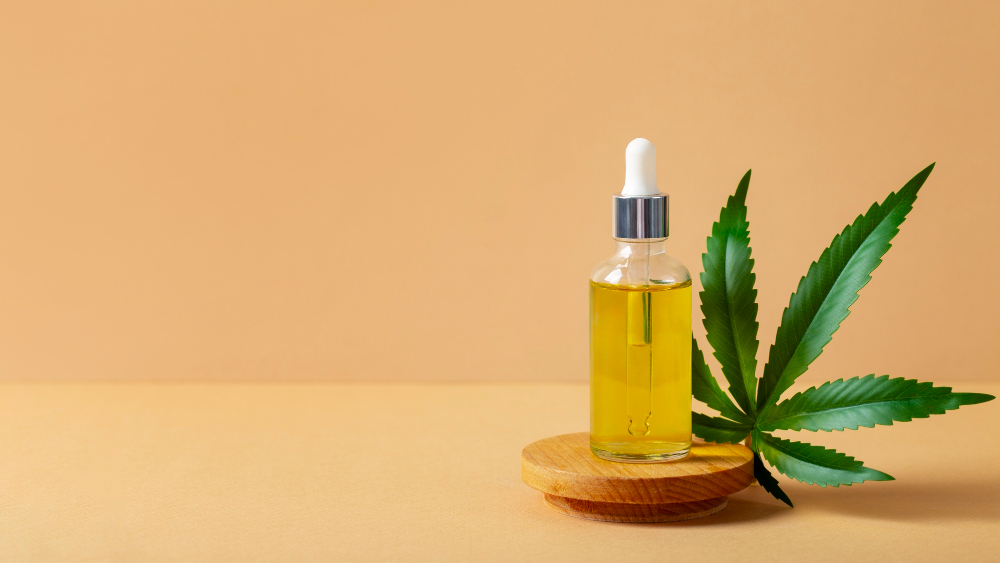Delving into the depths of cannabis exploration, one common query echoes among curious minds: ‘How much THC is in Delta 9?’
This question serves as a gateway to understanding the essence of the cannabis journey. Join us as we embark on an enlightening exploration, uncovering the origins, applications, and potency of Delta 9 THC.
From unraveling its diverse concentrations to deciphering their significance, we unravel the mysteries and guide you toward discovering this intriguing cannabinoid. Dive into our comprehensive guide to unlock the secrets of Delta 9 THC and elevate your cannabis knowledge.
What is THC?
THC stands for tetrahydrocannabinol, which is the primary psychoactive component found in cannabis. It’s the compound responsible for the “high” or euphoric effect that people experience when using cannabis.
THC interacts with receptors in the brain and nervous system, producing various effects such as relaxation, altered senses, and changes in mood. It’s one of the many cannabinoids found in cannabis, alongside CBD (cannabidiol) and others, each with its own effects and potential benefits.
What Is Delta 9?
Delta-9-tetrahydrocannabinol, often abbreviated as Delta-9 THC or simply Delta-9, is the primary psychoactive compound found in cannabis. It’s the most well-known and studied cannabinoid in marijuana.
Delta-9 THC is responsible for the euphoric and intoxicating effects commonly associated with cannabis use. It interacts with cannabinoid receptors in the brain and nervous system, leading to various effects such as relaxation, altered perception, and changes in mood.
How Much THC Is in Delta 9?
The potency of THC in cannabis products can vary widely depending on factors such as the strain of cannabis, cultivation methods, and processing techniques. In traditional cannabis flower, THC levels typically range from around 10% to 30% or even higher in some cases.
Conversely, hemp, which belongs to the cannabis family, must legally contain less than 0.3% Delta 9 THC. This difference is crucial because it affects the legal status; marijuana usage is often subject to regulation and may not be permissible in all regions, whereas hemp and its products are generally more widely tolerated.
How Long Does Delta 9 THC Stay In Your System
The duration that delta-9-tetrahydrocannabinol (THC), the psychoactive compound in cannabis, stays in your system can vary based on several factors including frequency of use, dosage, metabolism, and individual differences in body composition. However, generally speaking:
- Urine: THC can typically be detected in urine for up to 30 days after last use for heavy users. For occasional users, it may be detectable for up to 10 days.
- Blood: THC can be detected in blood for a few hours to a few days after use, depending on factors such as frequency of use and dosage.
- Saliva: THC can usually be detected in saliva for up to 1-3 days after use.
- Hair: THC can be detected in hair for a much longer period, potentially several months, as it grows out.
It’s important to note that these are general estimates and individual results may vary. If you have concerns about drug testing or how long THC will remain detectable in your system, it’s best to consult with a healthcare professional.
Additionally, it’s always important to consider the legal and social implications of cannabis use in your area.
What Is Delta 9 Half-Life?
The half-life of delta-9-tetrahydrocannabinol (THC) refers to the time it takes for the concentration of THC in the body to decrease by half. The half-life of THC can vary depending on factors such as the method of ingestion, individual metabolism, frequency of use, and dosage.
In general, the half-life of THC can range from several hours to a few days. When cannabis is smoked or vaporized, THC enters the bloodstream rapidly, leading to a relatively short half-life. On the other hand, when cannabis is ingested orally (e.g., through edibles), THC is metabolized by the liver into various metabolites, which can extend the half-life.
Studies have suggested that the half-life of THC in occasional users is typically between 1 to 3 days, while in chronic users, it may be longer. However, it’s essential to note that these are rough estimates, and individual variations can occur.
Hemp-derived Delta 9 Versus Marijuana-derived Delta 9
Delta-9 tetrahydrocannabinol (THC) is the primary psychoactive compound found in cannabis. When discussing hemp-derived delta-9 THC versus marijuana-derived delta-9 THC, the key difference lies in their legal status and concentration levels.
Source: Hemp vs. Marijuana
- Hemp-Derived Delta-9 THC: Hemp refers to cannabis plants containing 0.3% THC or less on a dry weight basis. Hemp-derived delta-9 THC comes from these plants.
- Marijuana-Derived Delta-9 THC: Marijuana typically contains higher levels of THC and is cultivated for its psychoactive effects. Marijuana-derived delta-9 THC comes from marijuana plants.
Legal Status
- Hemp-Derived Delta-9 THC: In many jurisdictions, hemp-derived delta-9 THC is legal, especially if it complies with the legal limit of 0.3% THC. However, regulations can vary by region, so it’s essential to check local laws.
- Marijuana-Derived Delta-9 THC: Marijuana-derived delta-9 THC is often subject to stricter regulations or outright prohibition, depending on the jurisdiction.
Concentration
- Hemp-Derived Delta-9 THC: Due to legal restrictions, hemp-derived delta-9 THC typically contains low concentrations, usually below 0.3%. While it may still have some psychoactive effects, they are generally milder compared to marijuana-derived THC.
- Marijuana-Derived Delta-9 THC: Marijuana plants can contain much higher concentrations of THC, ranging from a few percent to over 20% in some strains. This higher concentration leads to stronger psychoactive effects.
Effects: Mellow vs. Intense
- Hemp-Derived Delta-9 THC: The effects of hemp-derived delta-9 THC can vary depending on individual sensitivity and dosage. Users may experience mild euphoria, relaxation, and other typical THC effects, but they are often less intense compared to marijuana-derived THC.
- Marijuana-Derived Delta-9 THC: The effects of marijuana-derived delta-9 THC can be more pronounced due to its higher concentration. Users may experience stronger euphoria, altered perception of time and space, increased appetite, and potential negative effects such as anxiety or paranoia, especially in high doses or in individuals prone to such reactions.
In summary, the main differences between hemp-derived and marijuana-derived delta-9 THC lie in their legal status, concentration levels, and potential effects.
How Potent Is Delta-9 THC?
The potency of Delta-9-tetrahydrocannabinol (Delta-9 THC) can vary widely depending on factors such as the strain of cannabis, growing conditions, and processing methods.
However, on average, the THC potency in cannabis flowers typically ranges from around 10% to 30%. Some strains can even have THC levels exceeding 30%, while others may have lower concentrations.
It’s essential to note that THC potency in cannabis products like edibles, concentrates, and oils can also vary significantly and may have higher concentrations of THC compared to raw flower.
Significance of THC Concentration in Delta 9
The concentration of Delta-9-tetrahydrocannabinol (THC) in cannabis is significant for several reasons:
- Psychoactive Effects: THC is the primary psychoactive compound in cannabis responsible for the “high” or intoxicating effects users experience. Higher concentrations of THC generally result in more potent psychoactive effects.
- Medical Applications: THC has potential medical benefits, including pain relief, nausea suppression, appetite stimulation, and muscle relaxation. Understanding the THC concentration in a cannabis product can help patients and healthcare professionals tailor dosages for specific medical conditions.
- Legal Considerations: THC concentration often plays a crucial role in cannabis regulations and legal frameworks. Many jurisdictions have established legal limits on THC potency in cannabis products, especially those intended for recreational or medicinal use.
- Consumer Preferences: Some cannabis consumers prefer products with higher THC concentrations for recreational purposes, seeking a more intense experience. Others may prefer products with lower THC concentrations or balanced ratios of THC to other cannabinoids for more subtle effects or specific therapeutic benefits.
- Safety and Education: Knowing the THC concentration in cannabis products is essential for consumers to make informed choices about consumption. Higher THC concentrations can increase the risk of adverse effects such as anxiety, paranoia, or impairment, especially for inexperienced users or those prone to cannabis-related issues.
Overall, understanding THC concentration in cannabis is crucial for both recreational and medical users, regulators, healthcare professionals, and policymakers to ensure safe and responsible use while maximizing potential benefits.
Delta 9 THC Applications
Delta-9-tetrahydrocannabinol (THC) has various applications across different fields, primarily due to its psychoactive properties and potential therapeutic effects. Here are some common applications:
- Medicinal Purposes: Delta-9 THC is used in medicine primarily for its analgesic (pain-relieving), antiemetic (anti-nausea), and appetite-stimulating properties. It’s often prescribed or recommended for conditions like chronic pain, chemotherapy-induced nausea and vomiting, and appetite loss associated with HIV/AIDS or cancer [1].
- Recreational Use: THC is the primary psychoactive component of cannabis, making it sought after for its euphoric effects. Many people use it recreationally in disposable vapes or carts to induce relaxation, euphoria, and altered sensory perception.
- Pharmaceuticals: Some pharmaceutical companies are developing medications that contain synthetic versions of THC or THC derivatives. These medications aim to provide standardized doses of THC for therapeutic purposes, such as pain management or appetite stimulation.
- Topical Products: THC-infused creams, balms, and oils are used for localized pain relief and inflammation reduction. These products are applied directly to the skin and can provide relief without causing psychoactive effects.
- Edibles: THC can be infused into various food and beverage products, such as gummies, chocolates, and drinks. THC gummies offer an alternative consumption method for those who prefer not to smoke or vaporize cannabis..
Key Takeaways
Delta 9 THC stands as the primary psychoactive compound found in cannabis, dictating its euphoric effects. Its versatility spans from alleviating pain to stimulating creativity.
Legal distinctions exist between Delta 9 THC extracted from hemp versus marijuana, necessitating awareness when selecting products. Opting for an appropriate Delta 9 THC concentration is crucial for ensuring a pleasurable and safe encounter with cannabis.
References:
- Boggs DL, Peckham A, Boggs AA, Ranganathan M. Delta-9-tetrahydrocannabinol and cannabidiol: Separating the chemicals from the “weed,” a pharmacodynamic discussion. Ment Health Clin. 2016 Nov 3;6(6):277-284. doi: 10.9740/mhc.2016.11.277. PMID: 29955482; PMCID: PMC6007535.

 Join Daily Trust WhatsApp Community For Quick Access To News and Happenings Around You.
Join Daily Trust WhatsApp Community For Quick Access To News and Happenings Around You.



